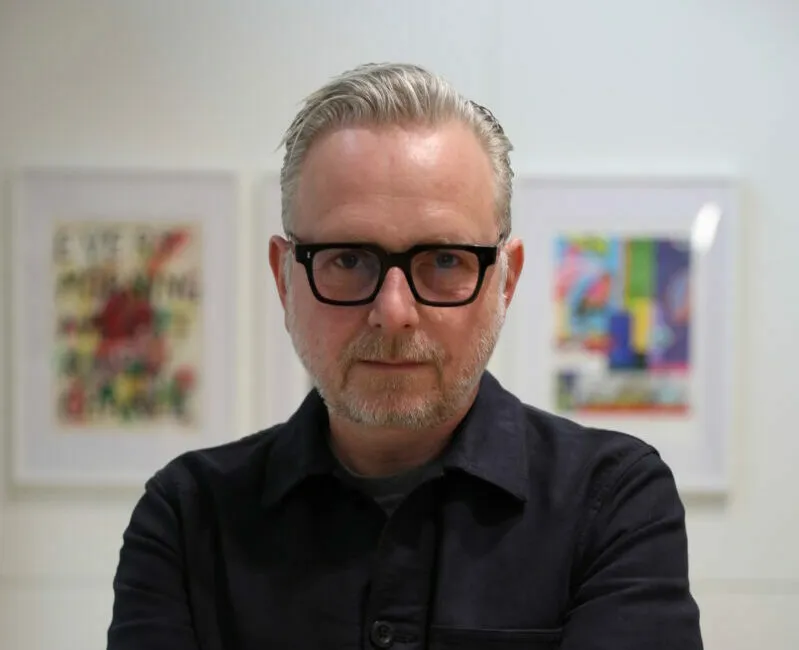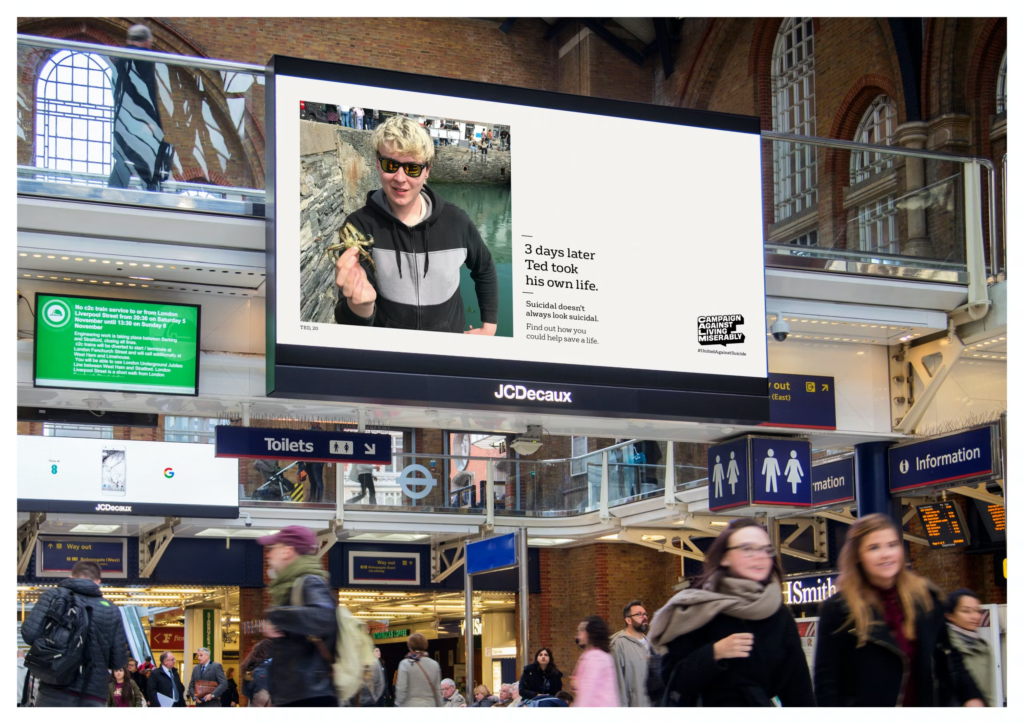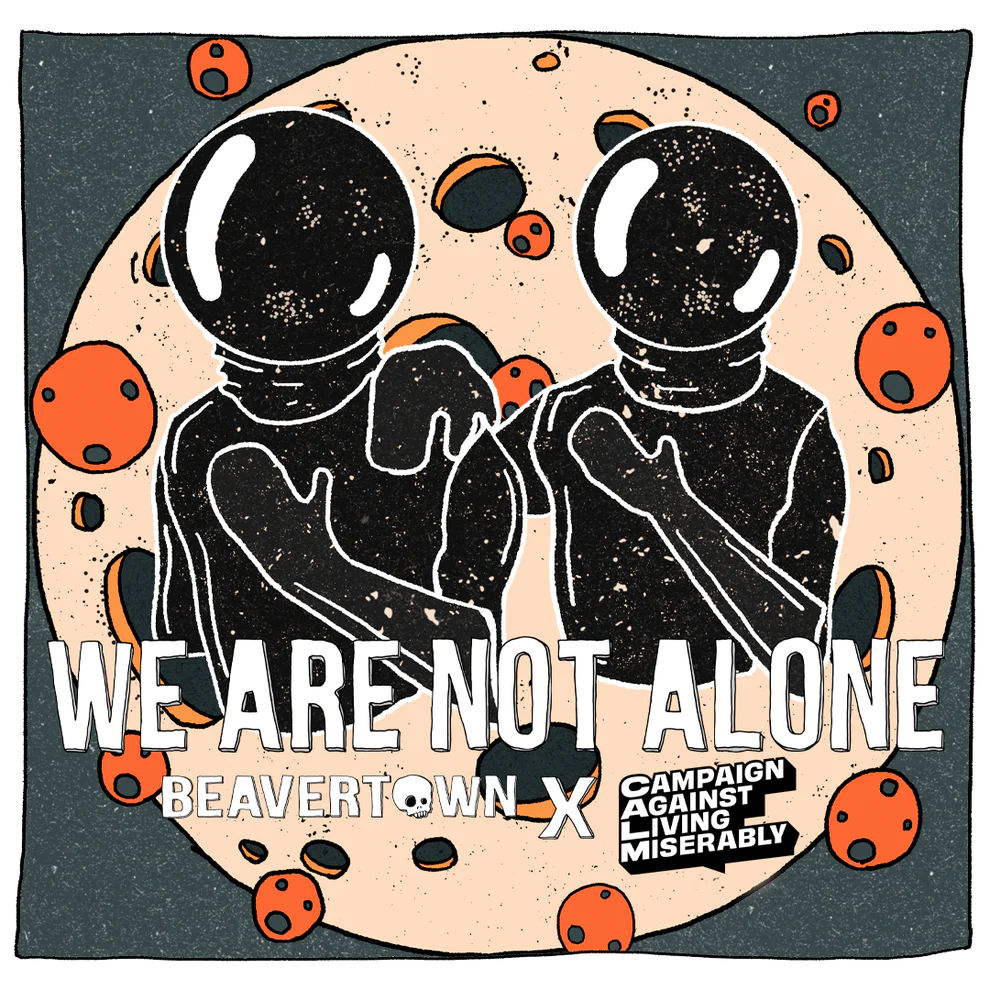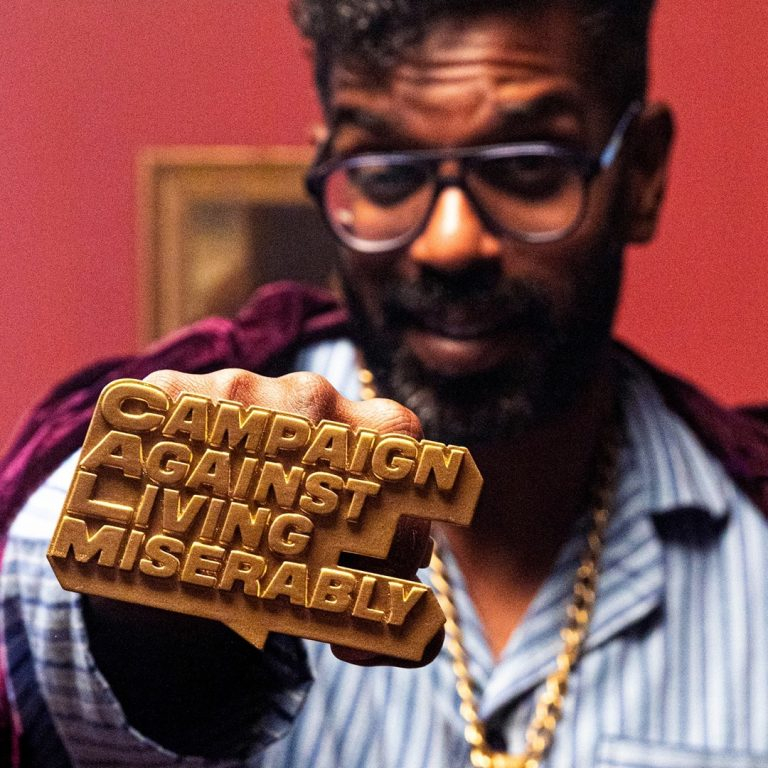10 things we learned from CEO Simon Gunning
Campaign Against Living Miserably (CALM) is perhaps the pre-eminent example of a UK charity that has built out a widely recognised and admired brand in the Third Sector by leveraging pro bono relationships with advertising and brand agencies.
Originally launched as a hotline back in 1997, CALM became a registered charity in 2006, with a focus on engaging with people around the incredibly sensitive topic of suicide by communicating through cultural channels like sport, music, comedy and fashion.

Simon Gunning joined as CEO in 2017 and has since overseen a truly seismic transformation of the organisation and how it operates. CALM has gone from eight employees to 158, has a 60% brand recognition in the UK, and was the most awarded advertiser in the world in 2023. They’ve also launched some of the most impactful and award-winning campaigns of the last decade, including Project 84, Suicide Notes and The Last Photo.
A large part of CALM’s success is down to what Simon calls the “fucking brilliance” of their pro bono creative agency partner, adam&eveDDB. It’s a relationship that has grown over the years and continues to this day.
We spoke with Simon to ask him about CALM’s approach to working with pro bono partners – and his insights into how smaller charities can build fruitful, mutually beneficial relationships in the long term.
Here’s 10 things we learnt from an illuminating chat.
1. From the start, the strategy of growing CALM was to behave like a brand
“What was immediately clear [about CALM] was that it was a tiny organisation that had a very strong brand. It was clear the initial strategy should be to behave in the same way as a commercial brand to gain an audience. And then to spin that audience to a desired outcome.
“But rather than engaging an audience to buy something, what we do is engage with our audience to help. What I wanted to do was create a brand, and an expression of a brand, which would be every bit as powerful, professional and contemporary as Nike or Apple.”
2. Finding partners required putting the work in
‘‘The first thing I did was to go and see people that I know from my time either client side or agency side. We have quite an effective weapon, which we call HSNs – which stands for Holy Shit Numbers. Because when you hear Holy Shit Numbers, decent people tend to say, what can I do about that? I basically wore out a lot of pairs of shoes, going around and talking to everyone I knew.
“The first and longest standing relationship that we have is with adam&eveDDB. That was just going to Paddington, talking to people that I knew, and giving them a brief which was provocative. We were put with a creative pair and a strategist, and it just really worked.”
3. For a pro bono relationship to work, the charity has to act like a fee-paying client
“That work turned into a campaign called Suicide Notes where we printed real suicide notes on the back pages of the Sunday papers. It didn’t win any awards, but it did cement the relationship with adam&eveDDB. And it was cemented because we behaved – and always have behaved – like a fee-paying client.
“To just be grateful and accepting of anything doesn’t work. You have to have the expertise in your organisation to know what you want to do with your marketing, with your brand, and with your outcome. The best relationship with an agency always has tension. The work has to be as good as it possibly can be.”

4. That first campaign set the standard
“On that first campaign, there was a jarring moment where the copy wasn’t good enough. My chairman and I came to the conclusion that it wasn’t ready on the Thursday, but we had the media booked for the Sunday. Going back to adam&eveDDB and getting everybody in a room, I think, was a little surprising for everybody because we were in a pro bono relationship.
“But it’s not about saying: do it again, do it again, do it again. What you do is lubricate those wheels with humanity, productivity, kindness and positivity to get to the best place you can. They responded to that brilliantly; the copy was refined and that really set us going into the two defining campaigns that we’ve run in my time at CALM.
When we did Project84, I remember saying this can’t be the apotheosis of what we do. This can’t be the end. We’ve got to do it again. It took us two years but then we got to Last Photo and we did it again. We can’t let our standards slip.”
5. Small charities should find a guide to show them the ropes
“For organisations who aren’t able to work with big agencies off the bat, I would recommend talking to friendly agency folk or a friendly marketing person to help you. To open the doors, to teach you the etiquette. In advertising and marketing, there’s a language, a degree of knowledge about the way things work that you need to have. It’s a bubble – and sometimes a self-regarding bubble.
“We approached Will Grundy, who’s our strategist at adam&eveDDB, to come onto our board. We don’t need a friendly agency person on our board, I just respect Will’s brain because it’s the size of Jupiter, and he’s a very nice person as well. If you’re a small charity, go and chat somebody up at an agency, somebody who’s good, get them on board, get them to be a partner with you.”
6. They also need to build that ad experience in-house
“At times, you have to be able to be in a room with some of the titans of the advertising industry. And if you turn up and behave like a knowledgeable prick, your relationship will reflect that. And if you turn up and you don’t understand the language, the science and the creativity that goes into an advertising campaign, you’ll either be railroaded by an agency that doesn’t push hard enough or you just won’t get to that wrap up of better, better, better.
“When you’re in a pro bono relationship, you do have to put the hours in. You have to demonstrate that generosity of spirit but also the expertise that is going to be well-received inside an agency.”

7. The fact that the relationship is pro bono should never influence the work
“Once you’ve established that you’re in a pro bono relationship, that should never be mentioned again. If anybody brings it up, they’re not getting it or in it for the right reasons. Your agency partner has to be in it because they believe in what you’re trying to achieve together, and because they want to win all the prizes.
“It has happened to me once with an agency where a campaign they were pitching wasn’t good enough. And the suit literally said: ‘Yeah but you’re not paying us for it, so you should take it as it is.’ That was meeting over, relationship over. We really are here to save people’s lives and it’s got to be really good. We’re competing with top advertisers, and other brands that are appropriating purpose too.”
8. In a long-term relationship, if the ideas get stale, look inwards first
“It’s not necessarily better [to switch things up and work with another agency]. If your agency is good, and you’re sure of that fact, and they’re coming back with the same ideas, or ideas that aren’t good enough, I would really have a look at your brief.
“Really get back to what it is you’re setting as a challenge. I would always want anybody that works for CALM in an agency-facing way to have a really big mirror. It’s that old thing: if you’re around a poker table and you can’t spot the sucker, it’s probably you.”

9. A good brand partnership can be just as important as an agency partnership
“The nature of a really strong brand partnership can be as important and powerful as an agency partnership. Nobody knew what CALM was seven years ago, but it was on the back of relationships with the likes of Dave TV, Carling and ITV that took us to those audiences. But the message has to be good enough to cut through.
“And a conversation with a brand partner has to be the same conversation as one with an agency. In the example of [CALM’s brand partnership with] Beavertown that is: I want people to go into a pub and choose Beavertown because somewhere, either explicitly or implicitly, they understand that Beavertown cares and does good. We want our brand partners to see the commercial benefits of actually doing good in the world. Because we will not licence our brand for charity washing.”

10. CALM leans on different partners for different purposes
“It’s informally agreed that adam&eveDDB do the hard hitting, big stuff. Those have also been our partnerships with [media partner] ITV. In an ideal situation you’ll have a media partner, an agency and a brand to pay for it all. That’s the holy trinity. We’ve managed to do that quite a few times.
“With other agencies, we’ll do daft things, funny things, stupid things. As far as our own in-house agency goes, we’ve built that out over the last five years. We have brand managers, a performance marketing team, a creative director, three designers, copywriters and a studio manager. That’s tactical: for our owned and earned channels. That’s where you can have that cadence and keep that drum beat going.”
To sum up
Not every charity in the UK can expect, or indeed has the need, to see the kind of growth that CALM has experienced in the last few years. But being smart and proactive about building pro bono relationships with the advertising sector makes sense for both sides of the equation, for several reasons – something we discussed in more detail in our recent post on the topic. Perhaps chief among them is the need for charities to properly compete with purpose-led brands in the attention economy.
To find out more about SoGood’s work, and our plans for connecting charities with agencies willing to give back, please do get in touch.



